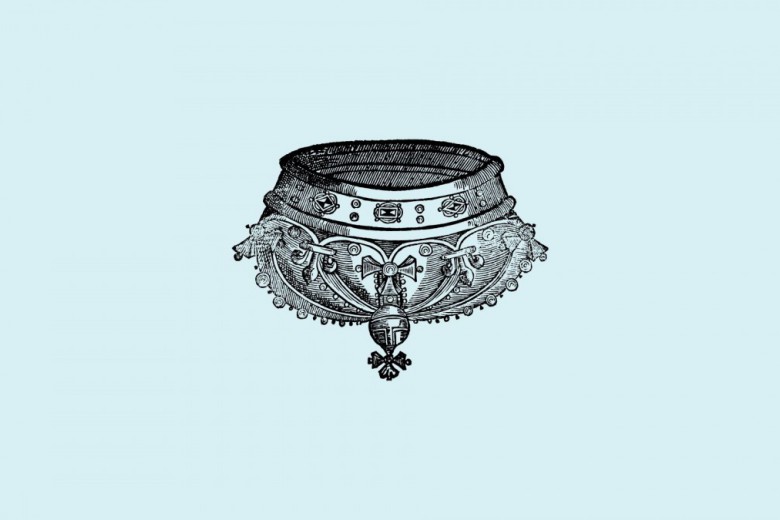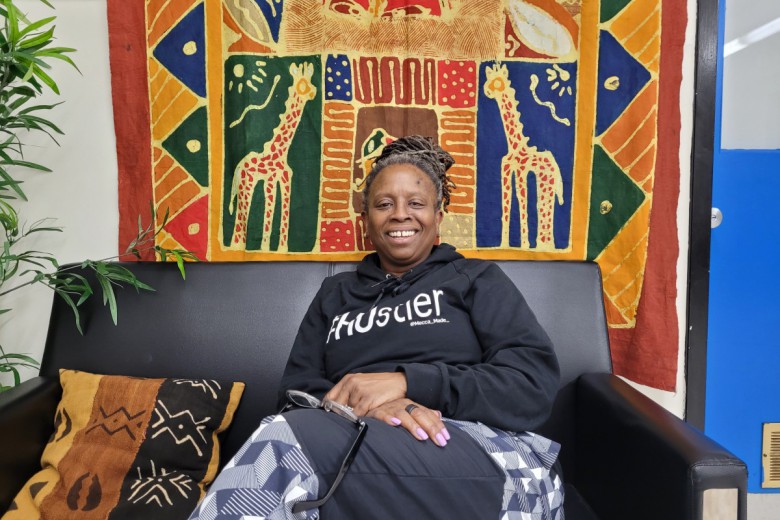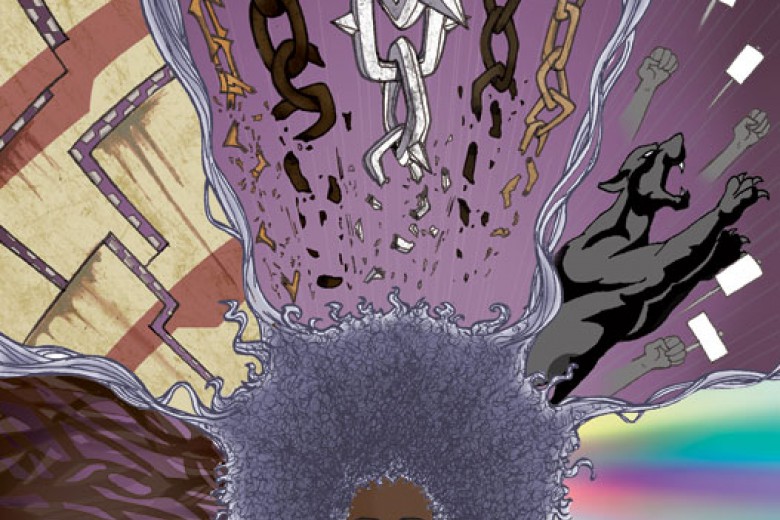I always get very angry when people, especially Black women, celebrate the strength of the Black woman and the legendary image of the dark-skinned superwoman. I constantly hear how Black women don’t commit suicide because they are too busy being the Great Mothers of the Black Race. Suicide and therapy are only for lazy, self-pitying white women who have nothing better to do with their time and money. I remember hearing a Black woman telling me very bluntly that Black women do not commit suicide because they simply don’t have the time: they have children, jobs, and so many other things to take care of that they have no time to consider killing themselves. I wanted very badly to tell her that my experience had taught me otherwise, but the stereotype of the superstrong Black woman is so overwhelmingly present.
The idea of the ‘dark-skinned superwoman’ – a term used by Kathleen, an African American woman living in Germany, who I interviewed – can on the one hand be seen as a political strategy to overcome negative representations of Black women in the white world; on the other hand, it imprisons Black women in an idealized image that does not allow us to express the profound wounds of racism. Kathleen speaks of this ambivalence, of having to fulfil empowering images – images that may actually be experienced as disempowering in that they silence the psychological damage of everyday racism.
I wanted very badly to tell her that my experience had taught me otherwise, but the stereotype of the superstrong Black woman is so overwhelmingly present.
In the 1960s, the Black feminist movement invested in images of the ‘powerful Black woman’ and the ‘super-strong Black matriarch.’ These images emerged in response to racist representations of the Black woman as lazy, submissive and neglectful of their children. 1 2 3 Vigorous and hard-working instead of lazy, assertive and independent instead of submissive, devoted instead of neglectful, such political images were a form of claiming a new identity. This is particularly visible in Black literature and philosophies, argues Patricia Hill Collins, where the Black woman and the image of the Black matriarch have been tendentiously glorified, especially by Black men – in honour of their mothers, but unfortunately not of their wives. 4 The images are richly endowed with the idea of strength, self-sacrifice, dedication and unconditional love – attributes that are associated with the archetype of motherhood, but which inadvertently refuse to acknowledge the real Black female experience.
It is the ability to survive under the adverse conditions of gendered racism that is being praised in these images. However, the portrait of the strong Black woman has been used in the white public to confirm old racist stereotypes. In her essay about the (mis)representation of the Black (super) woman, Tracey Reynolds reflects upon how the image of the strong, single and independent Black woman has been effectively adopted by the media to construct the Black male as pathologically absent, unreliable and sexually irresponsible, and the Black family as a destroyed ‘institution.’ 5 This form of media attention, she argues, is divisive and contentious, creating hostilities between Black women and Black men, and effectively preventing a forum for debating the impact of racism on gender constructions.
On the other hand, it imprisons Black women in an idealized image that does not allow us to express the profound wounds of racism.
I remember another woman ... once used the example of a woman in Mozambique who managed to give birth to her child in a tree during the flood last year as proof of how tough we are: “No white woman could ever do that. White women run to therapists and psychologists when they have problems. Not us. We don’t need all that.” It hurts to hear these things, especially coming from other Black women, but at the same time, I feel that there is nothing I can say to challenge it. Maybe my mother would have benefited from some sort of counseling, if there had been appropriate resources available to her. I don’t think that we are ever taught to recognize when we need help, I know of so many [Black] women who have been overcome by depression at some point in their lives ...
I was talking with this woman yesterday. We were talking about this strength and this power image ... and she was telling me how she felt that the thing that white people in Germany hate about Black women is that strength. They fear our strength, and they fear our power, and they fear the strength that they cannot control. On one hand, I think I understood what she was saying, but on the other hand, I thought: “I’m not any stronger than any other white woman out there who is at least my size!” But I would like to be seen ... there’s also nothing gratifying about being another stereotype. About being seen as this woman of steel, who’s got this strength ... this strength is not always there, there are times when I feel so weak ... When I am angry, I want to have the freedom of being angry, and when I am weak I would like to have the freedom of being weak, without being taken advantage of. I don’t want to be super-human any more than I want to be sub-human.
After one is de-idealized, one becomes idealized, and behind this idealization lies the danger of a second alienation. In both processes one remains a response to a colonial order. The idealized images emerge as an inversion of the primary racist images: “[T]here’s nothing gratifying about being another stereotype,” says Kathleen, describing this process as doubly alienating. “I don’t want to be super-human any more than I want to be sub-human.” Kathleen wants to be reflected in her complexity as both good and bad, strong and weak, bitter and sweet – that is, as a subject.
"When I am angry, I want to have the freedom of being angry, and when I am weak I would like to have the freedom of being weak, without being taken advantage of. I don’t want to be super-human any more than I want to be sub-human."
In the subtext of these controlling images, Black women only find themselves in the third person, as they speak about themselves through descriptions of white women. “White women run to therapists and psychologists when they have problems. Not us,” says a woman to Kathleen. The woman speaks of a third person – a white woman – in order to describe herself, the first person. This third person is the norm and one is referring to oneself again through the white norm, describing the norm in order to expose one’s peripheral position. “[L]azy, self-pitying white women who have nothing better to do with their time and money” describes the opposite social condition of Black womanhood: working hard, nursing and nurturing white families, having no lives of their own and existing in poverty. Thus the narration of racism takes place, through descriptions of the white other in binary oppositions: white woman/Black woman, lazy/hard-working, privileged/unprivileged, rich/poor. One term only gains meaning in relation to its counterpart.
Excerpted from Plantation Memories: Episodes of Everyday Racism by Grada Kilomba (Between the Lines, forthcoming, May 2021). Plantation Memories is being published for the first time in North America on May 1, 2021, and is available for pre-order.
- Collins, Patricia Hill (2000), Black Feminist Thought. Knowledge, Consciousness, and the Politics of Empowerment. New York: Routledge. ↩
- hooks, bell (1992), Black Looks. Race and Representation. London: Turnaround. ↩
- Reynolds, Tracey (1997), "(Mis)representing the black (super)woman." In Heidi Safia Mirza (ed.) Black British Feminism: A Reader. London: Routledge. ↩
- Collins (2000). ↩
- Reynolds (1997). ↩







